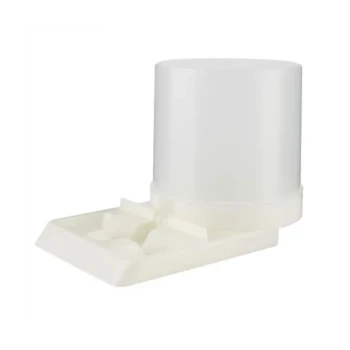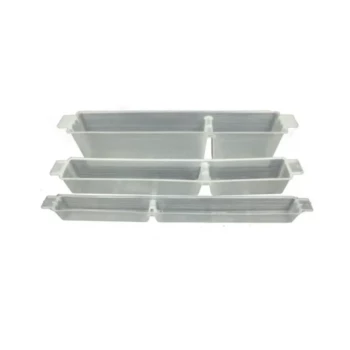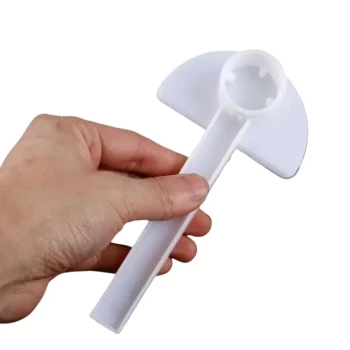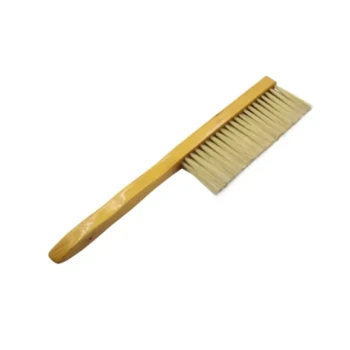In principle, a beekeeper feeds an established honey bee colony for two primary reasons: to ensure it has enough food stores to survive the winter and to prevent starvation in late winter before natural forage becomes available. While feeding is also essential when installing a brand-new package of bees, this is a distinct scenario focused on initial establishment rather than maintaining an existing colony.
The core principle of feeding is to act as a targeted intervention, bridging a critical gap between the colony's needs and the environment's resources. It is a tool to prevent starvation, not a routine supplement.
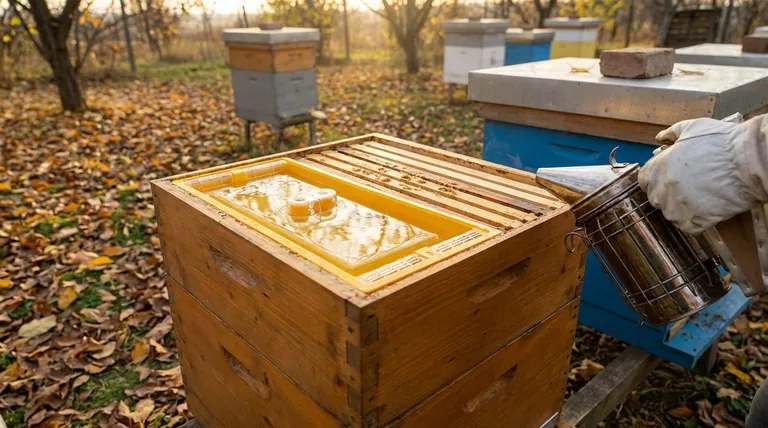
Fall Feeding: Preparing for Winter Survival
The most common reason to feed an established colony is to correct a food deficit in the fall. This ensures the bees have adequate resources to last through the long, cold winter months when they cannot forage.
The Goal: Reaching Target Hive Weight
Bees consume honey to generate heat and survive as a cluster during winter. A beekeeper's primary goal in the fall is to ensure the hive reaches a minimum target weight before the first frost. This weight, which varies by climate and hive type, indicates sufficient honey stores.
Why a Colony Might Be Light
A colony may have insufficient stores due to a poor summer nectar flow, a late-season swarm that depleted resources, or over-harvesting of honey by the beekeeper.
How to Assess Stores
Beekeepers assess stores by lifting the back of the hive to gauge its weight. An experienced beekeeper can feel if a hive is "light." A more precise method involves weighing the hive and comparing it to the local target weight for winter survival.
Late Winter Feeding: The Emergency Bridge
The second critical feeding window occurs in late winter or very early spring. At this point, the colony may have consumed all the honey it stored in the fall, but the weather is still too cold for the first spring blossoms to produce nectar.
The Late Winter Starvation Risk
This is the most dangerous period for starvation. The queen begins laying more eggs in late winter, causing the colony's population and food consumption to increase dramatically. This spike in consumption can rapidly deplete the last of their food stores just weeks before salvation arrives in the form of spring flowers.
Signs of an Emergency
A beekeeper might discover a potential starvation event during a quick "heft" of the hive on a warmer day. A distressingly light hive is a clear signal. In dire situations, you may find dead bees with their heads inside empty honeycomb cells, a tell-tale sign of starvation.
The Goal: Survival Until First Bloom
Emergency feeding is not about long-term buildup; it is a short-term bridge to keep the colony alive until the first natural nectar flow begins. This often involves providing fondant, dry sugar, or sugar cakes directly above the cluster, as liquid feed can be difficult for the bees to access in the cold.
Understanding the Trade-offs of Feeding
While necessary to prevent starvation, supplemental feeding is an intervention with potential downsides. A responsible beekeeper uses it judiciously.
Risk of Contaminating the Honey Harvest
Feeding sugar syrup while bees are producing honey intended for human consumption is a critical mistake. It adulterates the final product, meaning you are harvesting sugar water, not pure honey. All feeding must stop well before honey supers are added to the hive.
Attracting Pests and Robber Bees
Open feeding or messy syrup spills can attract ants, wasps, and robber bees from other hives. This can create a chaotic and dangerous situation where a stronger colony robs the weaker, fed colony of all its resources, often killing it in the process.
Creating an Unnatural System
Relying on feeding as a crutch can mask underlying problems with a colony, such as a weak queen or poor genetics. The most sustainable approach is to cultivate strong, self-sufficient colonies that can manage their own resources in all but the most challenging conditions.
Making the Right Feeding Decision
Your decision to feed should always be based on a clear need, not a predetermined schedule.
- If your colony feels light in the fall: Begin feeding a 2:1 sugar-to-water syrup to help them reach their target winter weight before cold weather sets in.
- If you suspect starvation in late winter: Perform a quick hive check on a mild day and provide emergency solid food like fondant or sugar cakes directly above the cluster if stores are gone.
- If you are installing a new package or nuc: Feed a 1:1 sugar-to-water syrup consistently to fuel the critical process of drawing out new honeycomb.
Understanding why and when to feed is the defining skill of a beekeeper who works in partnership with their bees.
Summary Table:
| Feeding Condition | Goal | Timing | Key Action |
|---|---|---|---|
| Fall Feeding | Build winter honey stores | Before first frost | Feed 2:1 sugar syrup to reach target hive weight |
| Late Winter Feeding | Emergency bridge to spring | Late winter/early spring | Provide fondant/sugar cakes directly on cluster |
| Post-Swarm/Recovery | Replenish depleted resources | After a swarm or harvest | Feed 1:1 sugar syrup to support colony rebuilding |
Ensure your apiary's success with the right equipment. Feeding is a critical skill, but it starts with a strong hive. HONESTBEE supplies commercial apiaries and beekeeping equipment distributors with durable, high-performance beekeeping supplies through our wholesale-focused operations. From hive components to feeding supplements, we provide the tools for healthy, productive colonies.
Contact HONESTBEE today to discuss your wholesale needs and build a more resilient beekeeping operation.
Visual Guide

Related Products
- Professional Hive Top Bee Feeder for Beekeeping
- HONESTBEE Professional Hive Top Bee Feeder Feeding Solution
- Rapid Bee Feeder White Plastic 2L Round Top Feeder for 8 or 10-Frame Bee Hives
- HONESTBEE Entrance Bee Feeder Professional Hive Nutrition Solution for Beekeeping
- Professional Hive Front Entrance Bee Feeder
People Also Ask
- Why is a top feeder essential for bees? Ensure Colony Health and Efficiency
- Do I need an inner cover with a hive top feeder? Optimize Your Hive Setup for Healthy Bees
- How to use a top feeder in a beehive? A Guide to Effective Beehive Feeding
- What types of hive boxes is the round hive top feeder compatible with? Universal Fit for 8 & 10-Frame Langstroth Hives
- What is a top feeder for bees? Maximize Colony Health with Efficient Feeding



